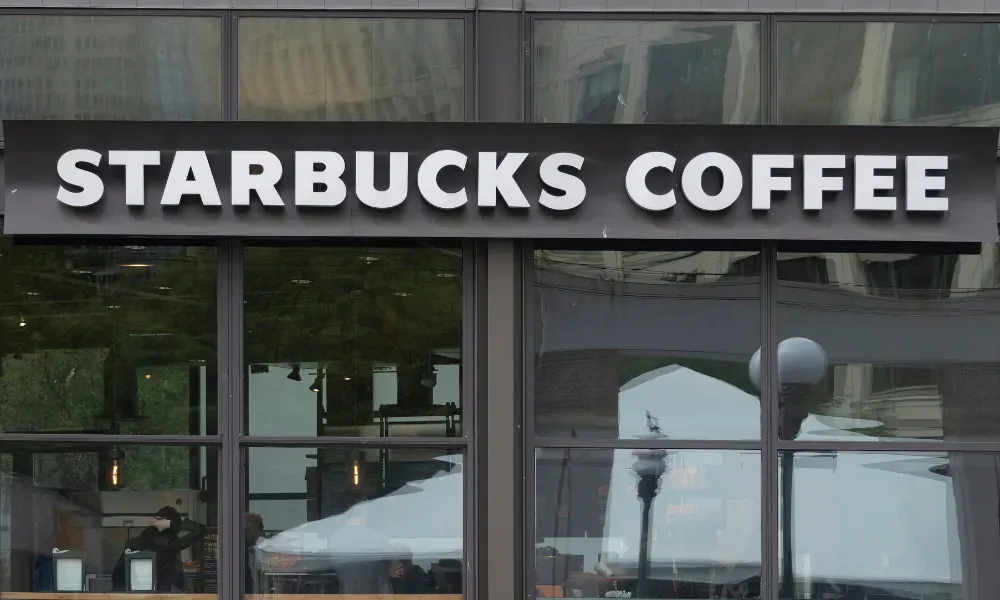Starbucks’ return to office policies mark a significant shift for its corporate employees, mandating a four-day in-office schedule beginning in October. This announcement comes from CEO Brian Niccol, who acknowledges the challenging transition but emphasizes the importance of human connection in a post-pandemic world. In a bid to reshape the company’s culture and boost performance, Starbucks also offers a voluntary exit program for those unwilling to comply with the new policies. As the coffee giant efforts to navigate the complexities of workforce changes, the ramifications of remote work policies loom large, prompting discussions among employees and stakeholders alike. Amidst the backdrop of declining sales, this office return initiative reflects a strategic response to revitalize the brand and secure its competitive edge.
As Starbucks embarks on its journey to encourage employees back to in-person work, the coffee chain is drawing attention to its corporate environment and evolving workforce management. The updated office attendance mandates indicate a push for collaboration and community among staff members, capitalizing on the value of face-to-face interactions. CEO Brian Niccol’s recent leadership decisions underscore the necessity of adapting to new workplace norms while addressing lingering concerns about staff retention amid the competitive landscape. With the introduction of alternative measures for remote positions, Starbucks demonstrates its commitment to balance business needs with employee expectations. This ongoing transformation reflects broader trends within the corporate world, as major companies pivot towards more defined office protocols after lengthy remote work periods.
Starbucks Return to Office Policies: A New Era
Starbucks has officially announced a significant shift in its remote work policies, mandating that corporate employees return to the office four days a week starting in October. This decision reflects the company’s core belief that in-person interactions are pivotal for fostering the human connections that Starbucks was built upon. CEO Brian Niccol emphasized this perspective in his communication, acknowledging that while some employees may disagree, this policy is essential for navigating the notable turnaround the company is currently undergoing.
Under the new Starbucks return to office policies, employees have the option of participating in a “one-time voluntary exit program with a cash payment” if they prefer not to comply with the in-office requirement. This move has sparked debate within the workforce, as many corporate employees grapple with the implications of returning to the office. Companies across various sectors are revisiting their remote work practices, and Starbucks’s decision highlights a trend where firms are increasingly prioritizing in-person collaboration. The shift in policy not only aims to enhance productivity but also seeks to strengthen team dynamics.
Brian Niccol’s Leadership and Workforce Changes
Under the leadership of Brian Niccol, Starbucks has embarked on a strategic journey aimed at revitalizing its operations. Since his appointment, Niccol has faced the intricate task of reversing declining sales while also managing corporate workforce changes. His initiatives have included streamlining processes, enhancing customer experiences, and making tough decisions about employment structures, such as the recent layoff of 1,100 employees. These changes highlight a fundamental shift in how Starbucks operates and align with broader industry trends where companies reassess their working models.
The corporate workforce changes initiated by Niccol are part of a larger strategy to position Starbucks favorably in a competitive market. With the ongoing adjustments, employees now find themselves navigating a workplace environment that emphasizes in-office presence and operational efficiency. Niccol’s strategy is not without controversy; however, it showcases a commitment to aligning workforce dynamics with the company’s vision while fostering resilience in a challenging economic landscape.
Evaluating the Impact of Remote Work Policies at Starbucks
As Starbucks enforces its remote work policies, many corporate employees are evaluating how these changes will affect their daily routines and overall job satisfaction. The transition to a four-day in-office workweek signifies a shift toward prioritizing on-site collaboration, which is increasingly seen as essential for innovation and teamwork. Companies that have implemented similar policies, like Google and Walmart, have experienced varied reactions, thus setting the stage for Starbucks to observe and learn from their experiences.
Despite the potential for increased in-person collaboration, the decision to mandate office attendance raises questions about employee morale and retention. Many Starbucks corporate employees have expressed concerns about balancing work-life commitments with the demands of returning to full-time office presence. As Starbucks implements these remote work policies, the company may need to consider additional flexibility measures to ensure it retains top talent while navigating the challenges brought on by these significant operational changes.
The Broader Trend of Corporate Office Returns
Starbucks is not alone in its drive to bring corporate employees back to the office as many companies rethink their approach to remote work. The coffee giant’s policies echo a broader trend across various industries where organizations are urging their teams to return to physical office spaces in an effort to restore traditional workplace dynamics. This trend is particularly evident within major companies like Walmart and Google, which have also mandated in-office presence following prolonged periods of remote work due to the pandemic.
The pressure to return to the office can be attributed to several factors, including the desire for improved collaboration, operational efficiencies, and enhanced team cohesion. Many leaders argue that a fully remote workforce might lead to isolation and detachment from corporate culture. Thus, as Starbucks navigates its own return to office policies, it simultaneously becomes part of an evolving narrative about the future of work and the importance of balancing operational needs with employee preferences.
Navigating Employee Sentiment Amid Change
As Starbucks navigates changes to its return to office policies, understanding and addressing employee sentiment becomes imperative. The announcement from CEO Brian Niccol has sparked a wide range of reactions among corporate employees, revealing a spectrum of feelings from support for in-person collaboration to resistance against mandated office days. This sentiment underscores the necessity for leadership to engage with employees and ensure their concerns are heard while weighing the operational philosophy of Starbucks.
There is an opportunity for Starbucks to foster a positive environment by communicating transparently about the reasons behind these changes. By involving employees in discussions about the return to office policies and offering avenues for feedback, the company can mitigate feelings of uncertainty and build greater trust within its workforce. Balancing corporate goals with employee satisfaction will be crucial as Starbucks seeks to redefine its workplace culture.
The Financial Implications of Office Policy Changes
The financial implications of altering return to office policies at Starbucks cannot be overlooked. As the company aims to streamline its operations under Brian Niccol’s leadership, the pressure to demonstrate a quick turnaround in financial performance looms large. Notably, analysts recently recommended that investors reevaluate their positions regarding Starbucks, citing concerns over unsustainable performance metrics and the ongoing adjustments in corporate employment policies.
Shareholder confidence is significantly affected by such operational changes, and Starbucks’s recent stock fluctuations reflect the market’s cautious stance. As the company seeks to grow its market cap amidst these voluntary exit programs and enforced return-to-office mandates, it is crucial for Niccol and his team to effectively communicate the potential for long-term gains resulting from these policies. Ensuring that the workforce remains engaged and productive will be vital for maintaining stakeholder trust as Starbucks navigates through these transformations.
Fostering Company Culture in Hybrid Environments
As Starbucks prepares to implement its office return policies, the focus shifts to how company culture can be maintained within a predominantly hybrid work environment. The emphasis on four days in the office presents a chance for Starbucks to actively cultivate a culture that thrives on collaboration and employee connection. Ensuring that the culture remains strong will be essential for motivation and overall business success.
To cultivate this culture, Starbucks can invest in team-building activities, regular check-ins, and opportunities for employees to voice their experiences and challenges. Creating an inclusive environment where everyone feels valued—whether they are in the office or working remotely—will not only mitigate any resistance to the return-to-office policies but will also strengthen the workforce’s dedication to the company’s mission and goals.
Challenges and Opportunities in Starbucks’ New Work Environment
With the implementation of new return to office policies, Starbucks faces numerous challenges, particularly in managing the diverse expectations of its workforce. While some employees may welcome the change as an opportunity for greater collaboration, others may feel apprehensive about returning to a more traditional office setting, especially after enjoying the flexibility of remote work. This dichotomy presents a challenge for leadership as they seek to harmonize the differing views while still adhering to corporate goals.
At the same time, these challenges offer significant opportunities for Starbucks to redefine its work environment. By fostering open dialogues around work preferences and exploring innovative hybrid models, Starbucks can demonstrate its commitment to employee well-being. Such initiatives can help bridge the gap between management objectives and employee sentiments, leading to a more engaged, productive, and satisfied workforce.
Looking Ahead: The Future of Work at Starbucks
As Starbucks embarks on this new phase of office policies under the leadership of Brian Niccol, the future of work at Starbucks will be closely monitored by both industry experts and the company’s dedicated workforce. The shift towards increased in-office presence aligns with broader trends in the corporate world, where companies prioritize direct collaboration and operational efficiency. However, how effectively Starbucks navigates this transition will play a pivotal role in its long-term success.
To prepare for the future, Starbucks may need to continuously assess and adapt its return to office strategies based on employee feedback and marketplace dynamics. Maintaining flexibility while prioritizing in-person teamwork will require innovative approaches to workplace culture. By balancing these components, Starbucks can position itself as a leader in integrating modern work practices within the traditional corporate culture it seeks to revive.
Frequently Asked Questions
What are Starbucks’ return to office policies for corporate employees?
Starbucks has announced that starting in October, corporate employees will be required to return to the office four days a week. This decision is part of Starbucks’ effort to foster human connection and drive the company’s turnaround strategy under CEO Brian Niccol’s leadership.
What if a Starbucks corporate employee prefers to remain remote rather than return to the office?
For those who prefer not to return to the office and would rather leave the company, Starbucks is offering a one-time voluntary exit program that includes a cash payment, as stated by CEO Brian Niccol in his communication to employees.
How has Brian Niccol’s leadership influenced Starbucks’ remote work policies?
Under Brian Niccol’s leadership, Starbucks has shifted its remote work policies by mandating that corporate employees return to the office four days a week. This approach aims to address the company’s declining sales and improve operational efficiency.
What were the previous remote work policies at Starbucks prior to the office return announcement?
Prior to the recent office return announcement, Starbucks had mandated a three-day weekly office presence for employees in October 2022. This policy has evolved into the current requirement of four days a week for corporate employees starting in October.
What workforce changes have occurred at Starbucks in relation to their return to office policies?
In addition to requiring a return to the office, Starbucks has undergone significant workforce changes, including the elimination of 1,100 jobs and not filling hundreds of vacant positions. These alterations are part of Brian Niccol’s plan to streamline operations and enhance the overall business strategy.
How are other companies responding to remote work in comparison to Starbucks?
Like Starbucks, other companies such as Walmart and Google are also encouraging their corporate employees to return to the office. For instance, Walmart required office employees to relocate to Arkansas, while Google mandated a three-day in-office work policy for certain teams.
What are the expected benefits of Starbucks’ return to office policies?
Starbucks believes that returning to the office will help rebuild human connections among corporate employees, enhance collaboration, and support the company’s turnaround efforts aimed at improving sales and customer experience.
Will Starbucks’ return to office policies affect its stock performance?
While the return to office policies for corporate employees are part of a broader turnaround strategy under Brian Niccol, market reactions have been mixed. Starbucks shares saw a decline after negative investor advisories, highlighting the uncertainty surrounding the company’s recent changes.
| Point | Details |
|---|---|
| Return to Office Requirement | Starbucks corporate employees must return to the office four days a week starting in October. |
| Voluntary Exit Program | Employees who prefer not to return can opt for a one-time voluntary exit program with cash payment. |
| Leadership Statement | CEO Brian Niccol emphasizes human connection and the need for a turnaround at Starbucks. |
| Sales Strategy | The company aims to reverse declining U.S. sales by simplifying menus and improving service time. |
| Job Cuts | In February, Starbucks cut 1,100 jobs and decided not to fill hundreds of open positions. |
| Comparative Industry Trend | Other companies like Walmart and Google have also enforced return-to-office rules. |
Summary
Starbucks return to office policies require corporate employees to return to the office four days a week starting in October. This policy comes amid efforts to revive the company’s declining sales through strategic leadership, emphasizing a culture of human connection. Additionally, a voluntary exit program is available for those who prefer to leave rather than comply with the office attendance requirements. As the company navigates this transition, it reflects broader trends within the corporate sector, pushing for increased in-office presence.



